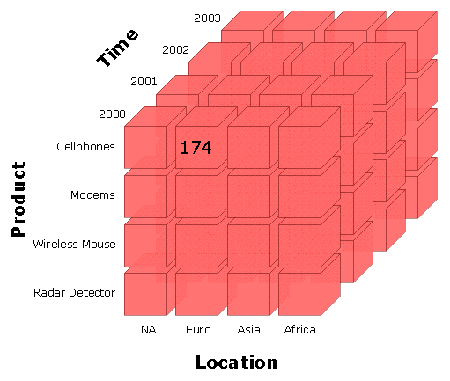10
2012
What is an OLAP Database?
OLAP stands for online analytical processing and is the process of easily acquiring selected data from a database. It also functions by displaying the information in different perspective depending on the user. If, for example, a user wishes to see a certain product and where it can be bought, OLAP will then generate different reports showing exactly what the user is looking for. This is due to the multidimensional capability of the OLAP, which, unlike the relational database, uses only two-dimensional interface. The beauty of a multidimensional approach is that it sees one criterion as a separate entity, therefore, producing separate reports. OLAP has the capability of finding each item and display them in separate forms.
Functions of OLAP Database
OLAP can be used for searching hidden relationship between several data, also known as data mining. The database for OLAP isn’t quite large as the storage for databases since only some of the transactions done in the database can be considered for analysis. Data can be brought from another type of database such as the relational database to build a database that is multidimensional for OLAP.
OLAP is commonly used in generating business reports for sales, marketing and management reports, budget, and financial forecast and so on. Databases that support OLAP use a multidimensional approach that authorizes difficult queries executed in a fast rate. The multidimensional database has aspects that are taken from the navigational database and hierarchical database, making the database faster than the relational database in executing an action or query.
OLAP Cube
The center of any OLAP system is the OLAP cube, which represents facts in a numeric representation called measures, which are then categorized as dimensions. This type of schema was inspired by the snowflake schema, which is commonly used in relational database. The measures came from the recorded data in tables holding facts, while the dimensions came from the tables for dimensions. Database users can think of measures having their own labels, while the dimension is the one that defines the measure.

OLAP Aggregations
OLAP is known to provide a result in less than a second, and this is due to the use of aggregations. The aggregation stemmed from the table containing the facts wherein alteration in some specified dimension granularity can aggregate the data in an upward motion. The aggregations can be numerous, depending on the number of possible dimension granularities. Due to the number of possible combination of dimension granulation, there will be a remainder of these combinations ready to be used depending on the demand of the user. This will also result to a view selection problem. In order to minimize this type of problem, the view selection can be curbed by determining the size of the aggregates and the time it takes before it can be updated. Either you can choose one or use them both to constrain your view selection. The function of the view selection is to simply lessen the time it takes to get a result from OLAP.
There are different types of OLAP in the market today. These are the multidimensional, relational, and hybrid.
Further readings
Advertisements
Recent Posts
- What is a Disaster Recovery Data Center
- What is a Relational Database?
- What is a Flat File Database?
- What is a DSN or Database Source Name?
- What is a Disaster Recovery Plan?
- What is an Open Source Database?
- What is Disaster Recovery?
- What is a Database Cluster?
- What are Database Servers?
- What are Database Forms?
Random Posts
- What is a DSN or Database Source Name?
- What is ODBC or Open Data Base Connectivity?
- What is a Sybase Database?
- What is ETL or Extract, Transform, and Load?
- Disaster Recovery Best Practices
- What is Database Hosting?
- What is a BLOB or Binary Large Object?
- What is a Database Table?
- Where to Get Database Training?
- What is a Relational Database?

 An article by
An article by 




